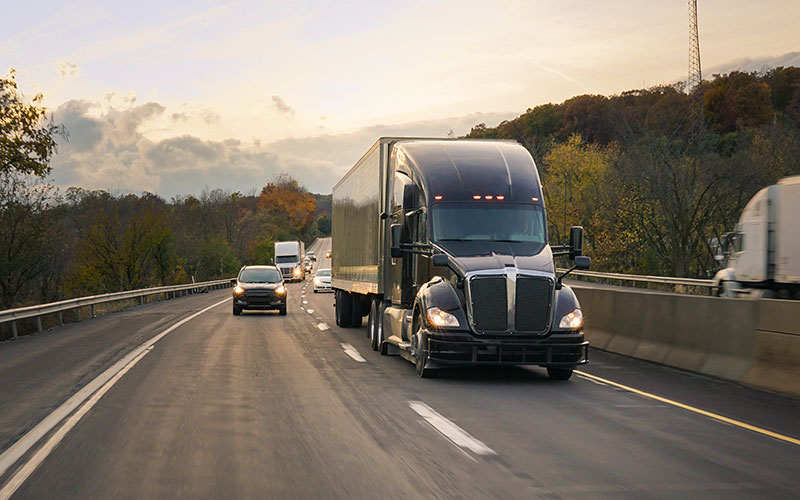
Sharing the road with heavy trucks requires a specific set of practices to ensure safety for all drivers. Here’s how to deal safely with these large vehicles and their professional drivers:
Understanding the Differences
- Size and Weight: Trucks are significantly larger and heavier than cars, which means they require more time to accelerate, maneuver, and stop. Understanding this is crucial for anticipating their movements.
- Blind Spots: Trucks have large blind spots, often called “no-zones,” around the front, back, and sides. If you can’t see the truck driver’s face in their mirror, they can’t see you.
Safe Practices
- Give Them Space: Always maintain a safe distance from trucks. Avoid cutting in front of them or following too closely. When passing, ensure you can see the entire front of the truck in your rearview mirror before moving back into the lane.
- Avoid Blind Spots: Stay out of a truck’s blind spots whenever possible. If you must pass, do so quickly and safely, and avoid lingering alongside the truck.
- Watch for Signals: Trucks need extra space to turn, often swinging wide to the left before making a right turn. Be cautious and do not attempt to pass on the right when a truck is signaling a turn.
Patience and Communication
- Be Patient: If a truck is maneuvering or backing up, give it plenty of room. Impatience can lead to risky behaviors that endanger both you and the truck driver.
- Use Lights to Communicate: Help truck drivers know they can safely move over by using your headlights. During the day, flash them on and off briefly. At night, turn your lights off for a second or two, but avoid using high beams to prevent blinding the driver.
Practical Examples
- Passing a Truck: When overtaking a truck, do so on the left side and complete the pass quickly. Ensure there is ample space before merging back into the lane.
- Following Distance: Maintain at least a 4-second gap behind a truck. This gives you more time to react to changes in traffic and provides a better view of the road ahead.
- Turning Trucks: When a truck is turning, particularly in tight urban areas, give it the space it needs. Trucks often have to make wide turns that can be misinterpreted by car drivers.
Emergency Situations
- Braking Suddenly: Trucks take longer to stop due to their weight. If a truck is braking ahead of you, increase your following distance and be prepared to stop safely.
- Roadside Emergencies: If a truck has pulled over due to an emergency, give it plenty of space. Move to the left lane if possible, to avoid creating a hazard for the truck driver and other motorists.
By understanding and respecting the unique needs of truck drivers, we can create a safer driving environment for everyone. Remember, professional truck drivers are trained to operate their vehicles safely and efficiently, but they rely on us to give them the space and consideration they need on the road.
Keep it between the fence posts!
